This post contains affiliate links. If you choose to purchase I will receive a small commission at no extra cost to you. I use the funds to buy yarn and make more free patterns! I greatly appreciate your support. For more info please see my Terms & Conditions. Thank You!
The lemon peel crochet stitch is a great easy level stitch made of two simple stitches. The wonderful texture from this stitch is all from how you arrange beginner level stitches. It’s the perfect crochet combination for blankets, mop heads, hats, cozies and anything else you want to add a bit of texture and visual appeal to! This easy to follow tutorial will teach you to make this beautiful stitch as a flat back and forth swatch and in the round.

It’s Not As Complicated As It Looks!!
The lemon peel crochet stitch is made up of a repeating pattern of single crochet stitch and a double crochet stitch. If you can chain, work each of those stitches, and count your stitches you have all the skills you need to make this wonderful texture!
Click Here for Help With The Chain Stitch
This Tutorial Will Help With The Single Crochet Stitch
Click Here for Help With The Double Crochet Stitch
The lemon peel stitch is very similar to the griddle stitch or cobble stitch. Because of this the names are sometimes used interchangeably.
Tools for the Lemon Peel Crochet Stitch
For this tutorial I worked my sample swatch with worsted weight cotton yarn and a size H8 crochet hook. This is the hook size recommended for this yarn weight.
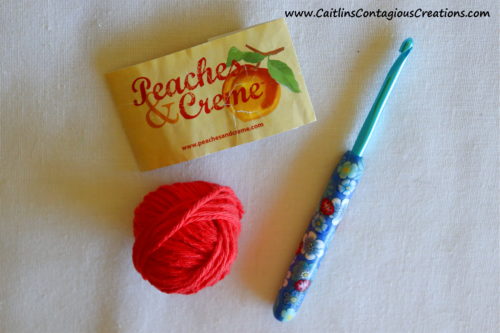
It’s important to note that the lemon peel crochet stitch can be worked with a variety of different sized yarns and hooks. You want the fabric you create to be tight enough to see the texture, but not to tight that you have trouble working the stitches into one another.
If you are unsure what to use I suggest starting with a bright color of cotton worsted weight yarn and a corresponding hook size.
This is the yarn I used and this is the hook I used (Choose size H8)
Lemon Peel Stitch Symbol
There doesn’t seem to be a separate stitch symbol for the lemon peel stitch. Which makes sense in a way, since it is really just a repeat of a single crochet and a double crochet. So below I have added photos of the symbols for these stitches.
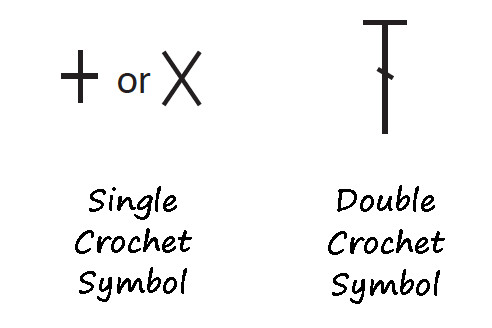
It is important to remember when working the lemon peel stitch that the single crochets are always worked in the double crochets from the previous row and the double crochets are always worked in the single crochets from the previous row.
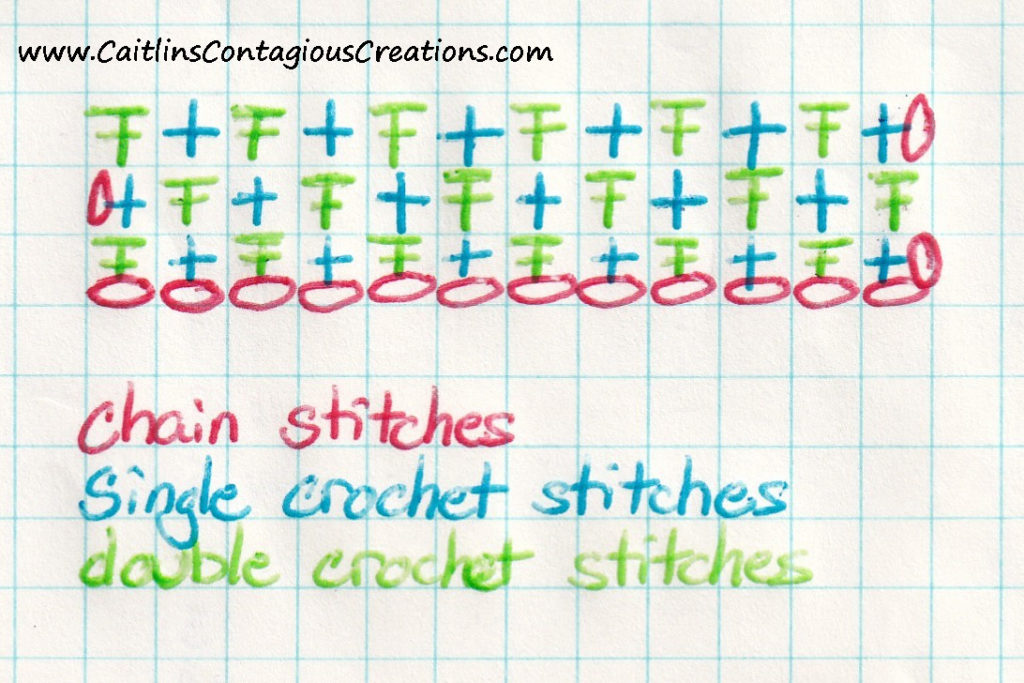
Some Things To Know Before You Begin…
Count Your Stitches!
Like most crochet stitches, it is very important to have the correct number of chains when you start so make sure you count your chains! Otherwise your rows will turn out off kilter and you’ll be wondering why the pattern doesn’t look right.
You need a multiple of 2 (an even number) to work the lemon peel texture. No matter if you are working the stitch flat or in the round, the texture is made up of an even number of stitches. With that in mind, The number you need to start differs depending if you are working flat or in the round. Read on for more details….
Lemon Peel Construction
The Lemon Peel Crochet Stitch looks the same from either side of your project. It has no “right side” or “wrong side”. It is made up of single crochet stitches and double crochet stitches stacked on top of each other.
Stripes!!
Don’t be afraid to get stripey with the lemon peel crochet stitch. It’s a great stitch for adding stripes and color to texture to get a wonderful design. The alternating nature of the single crochets and the double crochets lend an almost mini chevron effect to a project.
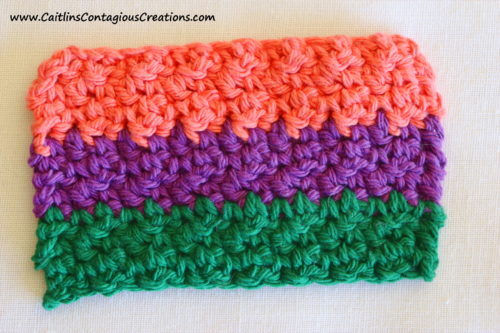
Lemon Peel Crochet Stitch Tutorial
Lemon Peel Stitch Worked Flat
Some Notes…
When working flat you need to start with an uneven chain number. The one additional chain stitch is the turning chain.
For this example I chained 13 to start my swatch. This will result in 6 of the lemon peel stitch “repeats” plus my 1 turning chain. Look at the stitch diagram in an above section to help see the stitch repeat.
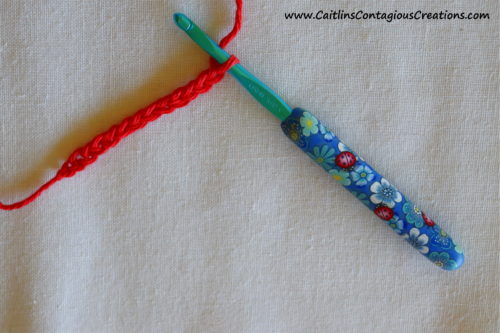
Tutorial Directions
For the first row of the swatch, work into the chain stitches. I work into the backs of my chains, but you can also work into the front loops.
For more help working chains, check out my Chain Stitch Tutorial Here
To begin the first row, skip the chain stitch directly next to your hook (this is your turning chain).
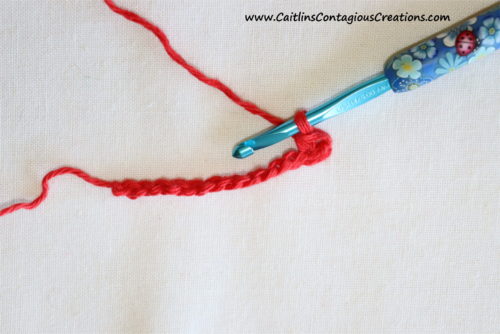
Work a single crochet into the second stitch from your hook.
Then work a double crochet into the stitch next to that.

Continue working a single crochet in one stitch and a double crochet in the next stitch all the way across the row. You should end the row on a double crochet.
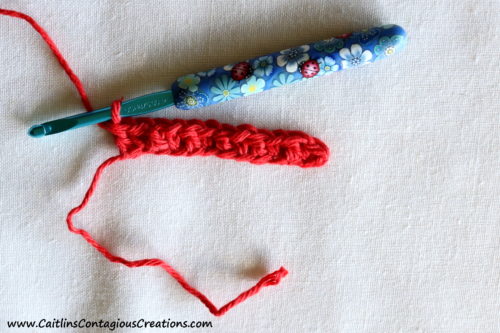
For the second row of the pattern (and every row after that too) you start by chaining 1 and then turning your work over so you can work the next row.
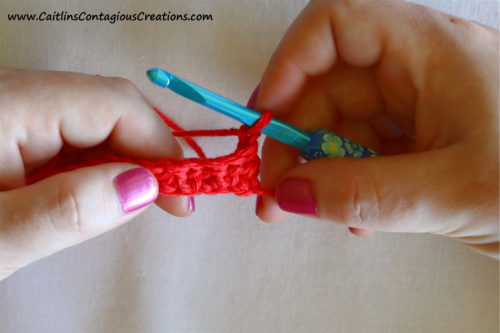
Begin a new row by working a single crochet stitch into the first stitch (this should be a double crochet stitch from the previous row). Then work a double crochet stitch into the following stitch (which should be a single crochet stitch from the previous row).
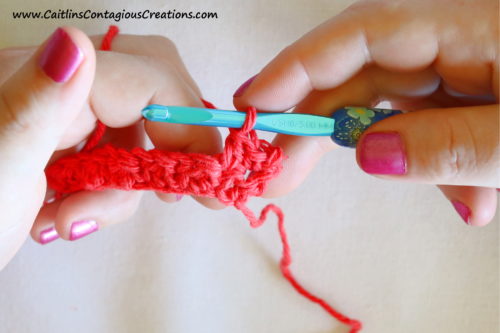
Row Repeat Directions
Ch 1. *SC in first st. DC in next st. Repeat from * across to end of row.
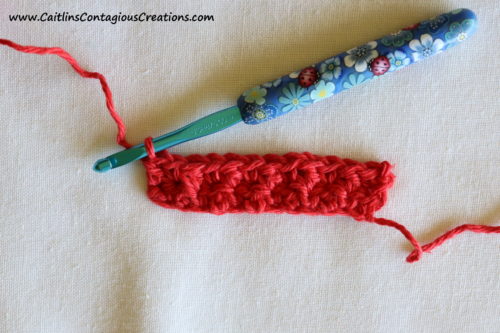
You will work each row in this same way until your work is as tall as you’d like. Tie off and weave in your ends when you are finished.
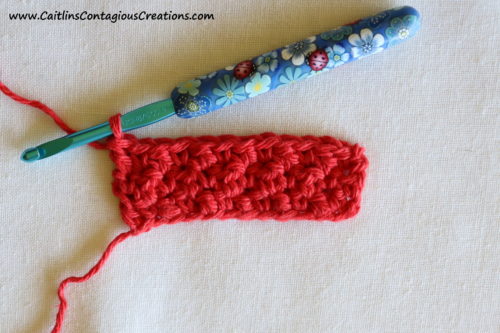
Lemon Peel Stitch Worked In The Round
Some Notes….
There are a few differences when working the lemon peel stitch in the round versus working it flat. The lemon peel crochet stitch is worked in unjoined rounds- meaning you will not join each round with a slip stitch. Because of this, it can be tricky to keep track of which stitch is the “start” or the round. Use a stitch marker to keep track! I like this easy to move stitch marker.
When working lemon peel stitch in the round you will begin with an even numbered starting chain and use a slip stitch to form the ring. This is the only time you will use a slip stitch.
Another important difference is that working the lemon peel crochet stitch in the round needs a 2 row repeat for the pattern instead of a 1 row repeat.
Tutorial Directions
To begin the tutorial, I chained 16 and then used a slip stitch to form the ring.
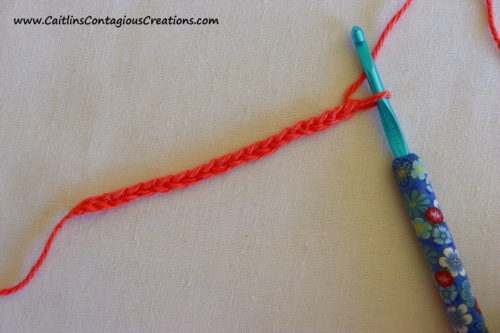
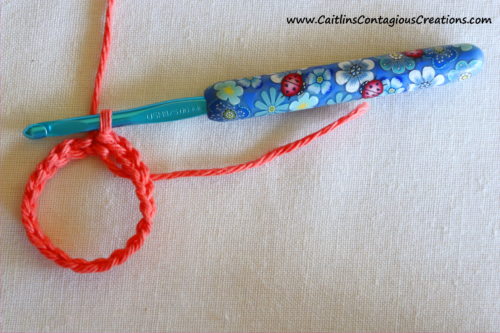
Chain 1 to bring your hook up to the appropriate level to work the round.
The first round is worked into the chain stitches you joined to form your ring. Work a single crochet in the first stitch, put your stitch marker in the top of this stitch. Double crochet in the next stitch. Continue working a single crochet in one stitch and a double crochet in the next stitch around, until the next stitch to be worked has your stitch marker in it. You should end on a double crochet.
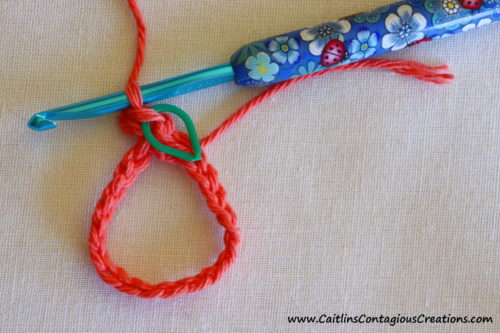
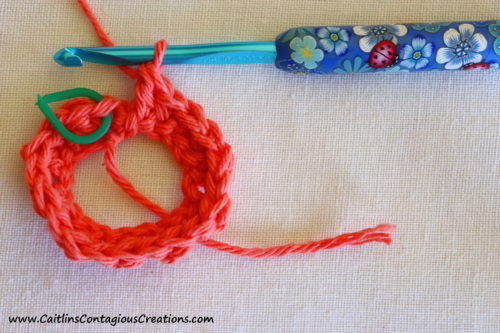
I like to pause and count here to make sure I still have an even amount of stitches.
For the next round you will start by working a double crochet into the stitch that had the marker in it (the first SC from the previous round). Put your stitch marker into the double crochet stitch you just made- this indicates the first stitch of the new row. Then work a single crochet into the next stitch. Repeat working a double crochet in one stitch and then a single crochet in the next stitch until you get around to the stitch marker again.
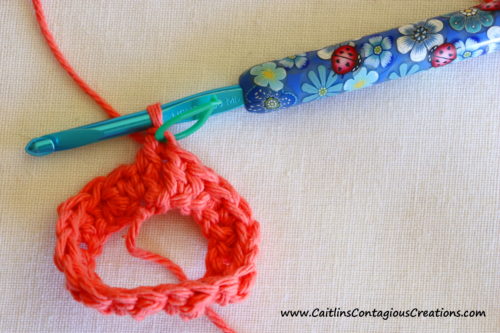
Row Repeat Directions
Foundation: Chain an even number of stitches, join with a slip stitch to form a ring. Work 1 more chain after joining.
Round 1: SC in first st of round, put stitch marker into this stitch. DC in next st. *Sc in st. DC in st. Repeat from * around to start of row.
Round 2: DC in first st of round, put stitch marker into this stitch. SC in next st. *DC in st. SC in st. Repeat from * around to start of row.
Continue repeating rounds 1 and 2 until your swatch or project is as tall as you’d like. Tie off with a slip stitch made into the first stitch of the row you just finished (the one with the stitch marker).
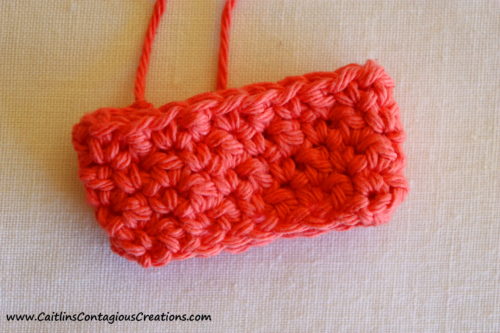
Practice, Practice, Practice!!!
Like most things in crochet (and probably any other skill) you will get better with practice. So grab some scrap yarn and work up a few swatches before you look for some fun patterns to work this stitch!!
Check These Out
If you enjoyed the lemon peel stitch you should check out my other tutorials on a textured stitches.
Front and Back Post Stitches make up the basketweave stitch
The Herringbone Stitch is another easy stitch with texture
The Spike Stitch gives the appearance of texture
Once you have a good feel for this stitch, try one of these patterns to use your new skills!!
My Lemony Sunshine Super Bulky Baby Blanket
I hope you enjoyed my tutorial!!
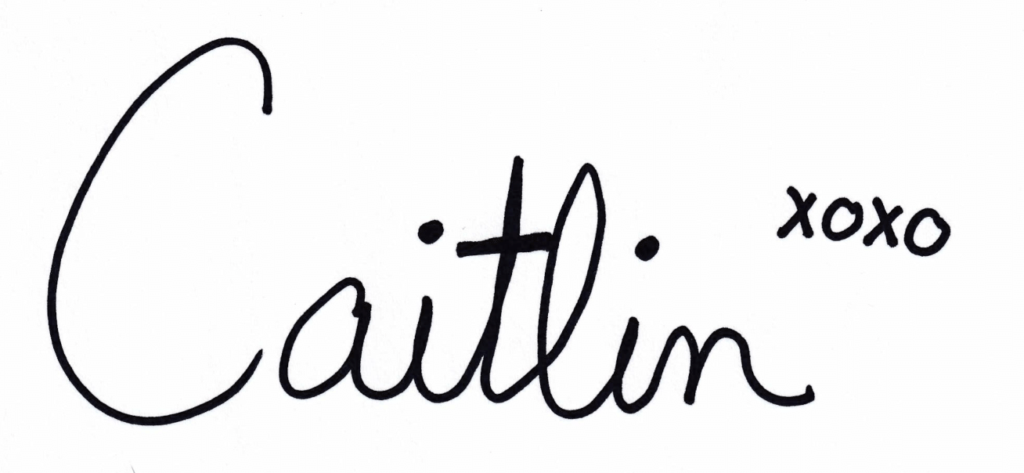
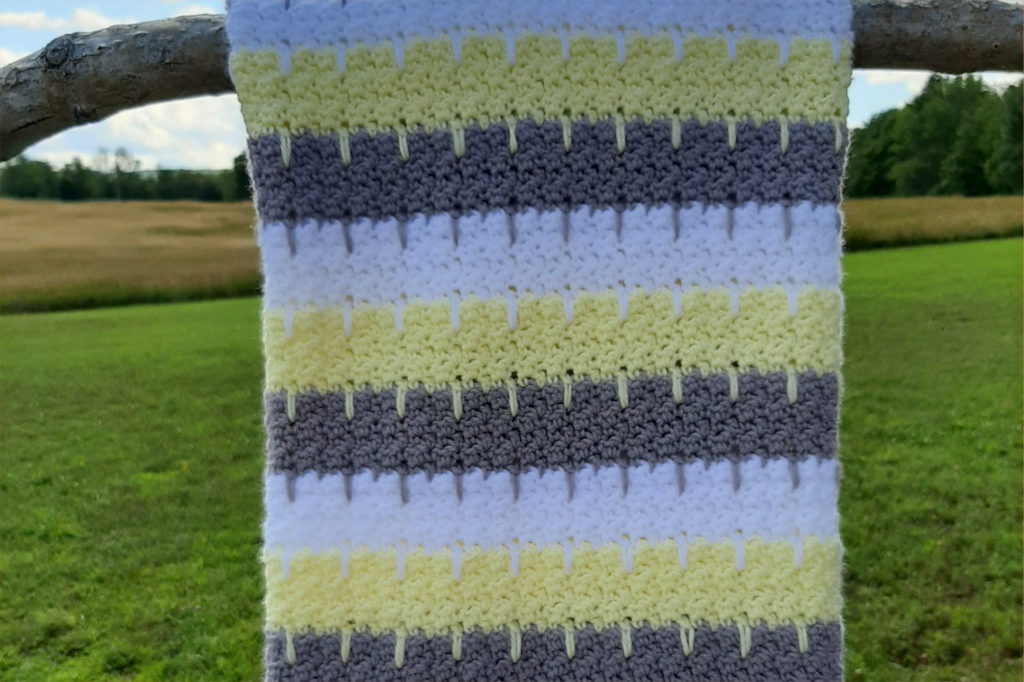
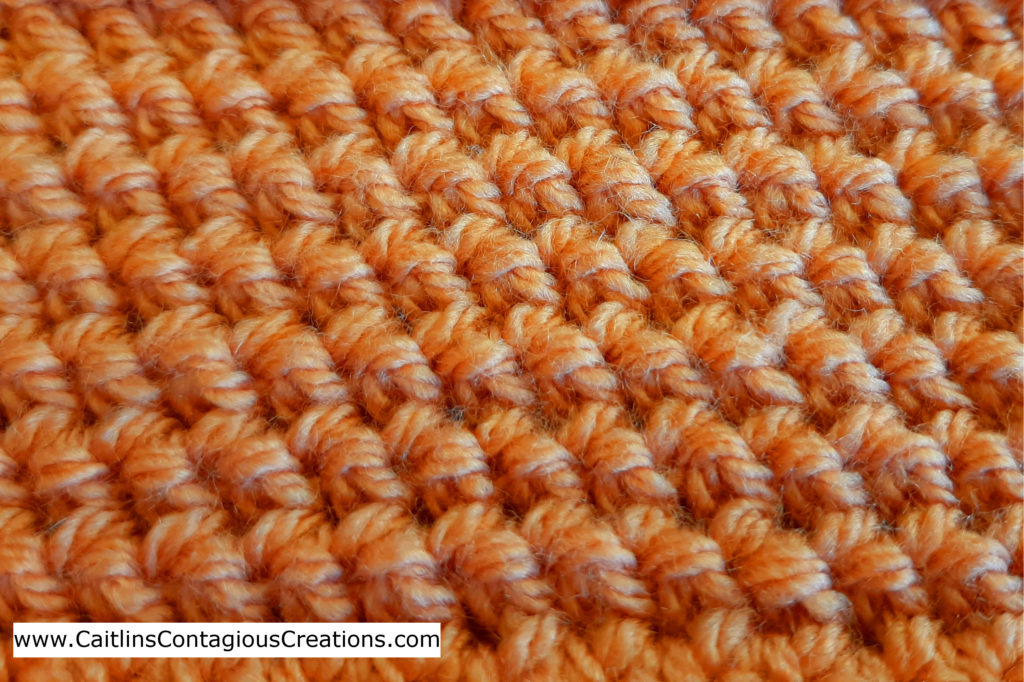
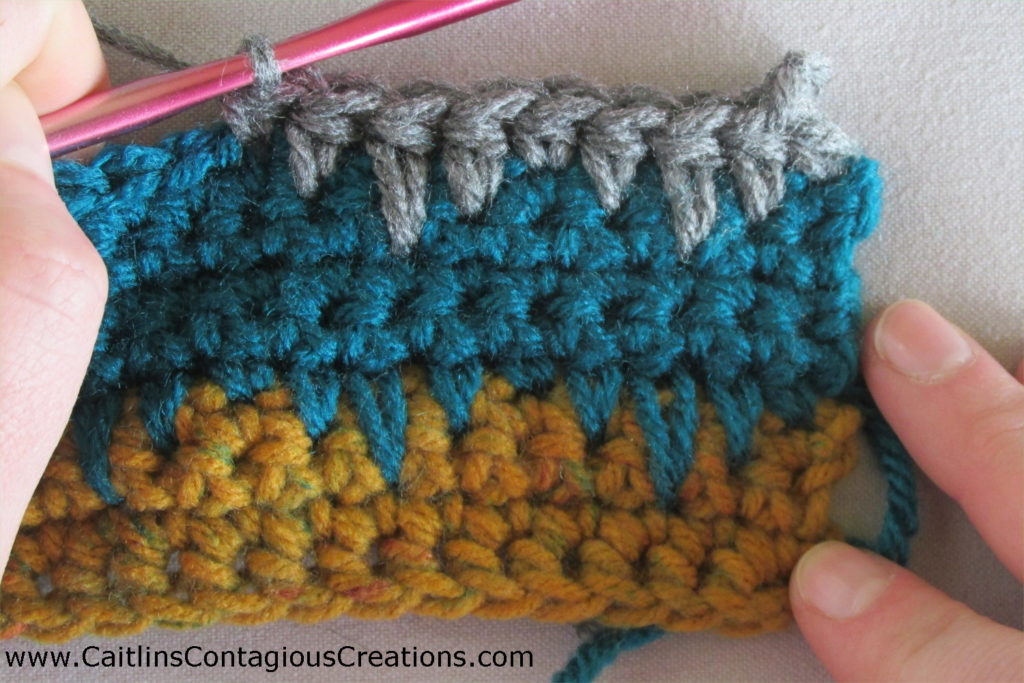








Hello Caitlin,
Thank you again for another simple to read/follow tutorial…Lemon Peel Crochet Stitch. I am especially grateful for the symbols and the chart done on graph paper and in colour. I know that sounds crazy but it works for my brain. I shall start with a dishcloth as my practice item because it’s not too large and besides, I can always use a new dishcloth. Later I can work on a larger project.
I do appreciate the time and effort you put into your tutorials especially when you have a new baby to care for. You don’t have any extra hours in your day but you still take time for us here in the crafting world. Thank you!
Trish, Thank you for your kind worded comment. I’m really pleased to know that you enjoy my tutorials. I also like when a tutorial includes a stitch diagram so I can see the symbols in use. I so enjoy helping others find a passion for crochet, it is hardly “work” for me :-). Thank you again!! Have a great week <3 ~Caitlin